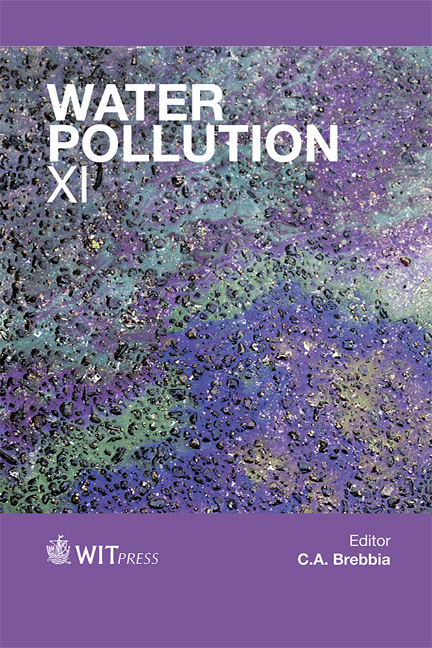Antibiotic Resistant Bacteria Used As Bioindicators Of Environmental Pollution Produced By Tertiary Treated Sewage Effluent
Price
Free (open access)
Transaction
Volume
164
Pages
9
Page Range
313 - 321
Published
2012
Size
373 kb
Paper DOI
10.2495/WP120271
Copyright
WIT Press
Author(s)
S. N. Al-Bahry, I. Y. Mahmoud & S. K. Al-Musharafi
Abstract
Oman depends on recycling treated wastewater as a solution to overcome the limited water supply. However, the risk of reusing recycled sewage water in the environment and public health is a major concern. Tertiary sewage treated effluent (TSE) was evaluated microbiologically from three sewage treatment plants (STPs). Mainly, all TSE from the three plants contained coliform and Escherichia coli. Multiple antibiotic resistant bacteria (MARBs) were also present in the three plants and the TSE distribution lines used for irrigation. The faecal coliform counts in the tertiary treated wastewater samples from the storage tanks of the plants fell within the acceptable limits of the Omani standards for watering public parks and landscapes. Microbial counts from the distribution lines of all plants increased significantly farther from the main TSE storage tanks. Irrigated soil from TSE revealed the presence of MARBs. Some of the isolates from the plants and irrigated soils share similar antibiotic resistance patterns but significantly at lower values. In general most of the isolates were resistant to tetracycline and ampicillin followed by streptomycin and minocycline. Presence MARBs is a clear indication of TSE pollution and can be used for biomonitoring the environment. The present systems of STPs are unreliable for complete eradication of MARBs and pathogenic bacteria. Keywords: sewage treated effluent, antibiotic resistant bacteria, pollution.
Keywords
sewage treated effluent, antibiotic resistant bacteria, pollution





